Sanitizing the water system is a task that intimidates a lot of Airstreamers. Especially newbies. The truth is, it’s pretty easy to do and it doesn’t require any special equipment.
Why sanitize the fresh water tank? If you don’t keep the tank clean, bacteria can grow and that’s never a good thing.
Here’s the procedure in a nutshell: Dilute some bleach with water, fill your tank with it, let the bleach/water solution sit for a few hours to kill bacteria, drain it out, and flush the tank and system with clean water.
Once you do this procedure a few times, you’ll feel like a pro. Honestly, the only (sort of) complicated part of the procedure is calculating the amount of bleach and working with a diluted bleach solution.
But first…is the tank water safe to drink?
I get this question a lot and the answer is, yes. Unless you are extremely particular about your drinking water, the water is safe to drink as long as you regularly sanitize the system.
It is true, however, that not all Airstreamers agree with me on this one. I know some who have elaborate on-board filtration systems to maintain the purity of their drinking water. If you have a built-in filter (meaning, not one screwed to the hose) read your specific filtration system’s Owner’s Manual BEFORE following the sanitation steps below. You may have to bypass or remove the filters before you can run bleach through the plumbing.
Even if you don't drink the water, at some point you’re going to use the tank water for cooking, brushing teeth, washing, or perhaps the dog’s water bowl. That’s why sanitizing is important.
Preparing for the job
Dump the gray water tank as you normally would. You'll need the gray water tank for flushing water through the system.
Get these items together. Sanitizing the tank requires no special tools. You probably have all these things in your house or shed already.
- Your Airstream Owner’s Manual
- Some household bleach (like Clorox)
- 1 gallon jug of water, about 80% full
- A flexible funnel (you can find these at Amazon by searching for "flexible funnel")
- Measuring cup (metal or glass preferably)
- Rubber gloves (optional but recommended)
- Calculator
1. Add the capacity of your fresh water tank, in gallons, to the capacity of the water heater tank.
This equation (fresh water tank capacity + water heater capacity) will tell you the right amount of bleach to use. If you have a water heater with a tank, it usually holds 6 gallons. If your Airstream has a tankless water heater (generally 2021 model year and later) you can count it as zero gallons. You’ll find the fresh water tank capacity in your Owner’s Manual.
For example, the fresh water tank in our Globetrotter 23FB holds 30 gallons and the water heater holds 6. That makes our total water system tank capacity 36 gallons.
2. Multiply the total tank capacity by 0.13 to determine the amount of bleach you’ll need to use, in ounces.
Using my example above, here’s the math: 36 gallons x 0.13 = 4.68 ounces.
So, I need 4.68 ounces of bleach to sanitize our system.
3. Measure the bleach and pour it into the gallon jug of water that’s 80% full.
This dilutes the bleach, making it easier to pour. Here's where the rubber gloves come in, if you want to keep possible splashes of bleach off your hands.
4. Pour the jug of water containing the diluted bleach into your fresh water fill.
Use the funnel so you don’t drip or splatter bleach water on your clothes or your skin. If some bleach gets on the Airstream it won't hurt it immediately, but you should rinse with plain water just to be sure.
5. After you’ve dumped the contents of the jug into the system, fill the remainder of the fresh water tank with water.
6. Disconnect the city water hose (if connected), turn off the water heater, turn on the water pump, and then run each of the faucets and other water outlets.
It's easiest if you do this one faucet at a time. Run it full hot and keep the water flowing until you can smell the bleach, then switch to cold and again wait until you smell bleach. Then close the faucet and move onto the next one. Don't forget the toilet, shower, and outside shower if you have one.
7. Let the diluted bleach solution sit in the system.
Let it sit for at least 4 hours to sanitize the system. (Leaving it longer will not hurt anything, so don't worry if you don't get to it until the next day.) If next time you want the sanitizing process to go faster, double the bleach ratio and you will only need to let the water sit in the system for 1 hour.
8. After the sitting period, drain all the water from the fresh water tank.
You can get the bleach-water mix out of the fresh water tank and plumbing by opening the kitchen and bathroom sink faucets fully (midway between hot and cold) and letting the water pump run at full blast. This will take a while, perhaps 6-10 minutes depending on the size of the water tank. Turn off the faucets when the water starts to sputter (indicating that the tank is nearly empty).
This process moves the remaining bleach-water mix from the fresh water tank to the gray water tank. Although there are drain petcocks in the fresh water tank that will dump the water on the ground fairly quickly without requiring the use of the water pump, the runoff on the ground might kill plants nearby so we don't recommend that method.
9. Refill the tank with freshwater, and drain it.
Now refill the tank with fresh water. Then open all faucets, shower and shower head, outdoor shower, etc. as you did before, until the bleach smell subsides. There will probably be a slight lingering odor of bleach for a while, but the water will be safe to use.
10. Dump the gray tank as you would normally.
Tips and tricks
To keep the fresh water system as clean as possible, get a good external water filter and use it every time you hook up to campground water or fill the tank.
If you're bothered by a chlorine smell after flushing the system, rinse the system with a solution of 1 quart of vinegar to 5 gallons of water. While you are refilling the tank in step 9, dump it in. Then flush the water out again until there is nothing left in the tank. Refill the tank with fresh water.
An option for making the water taste less bleach-y: Vitamin C tablets. A lot of people swear by these, but I have never tried them. There are also commercial products to make the water taste better, which you can find in RV stores and camping stores.


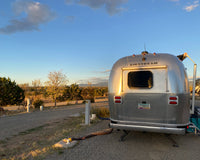
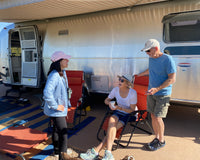
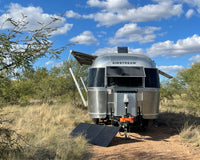
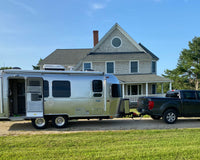
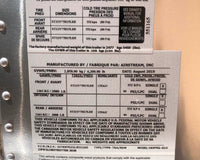
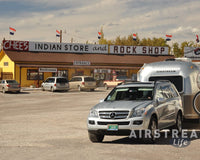

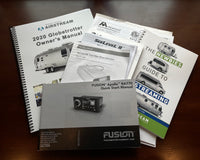
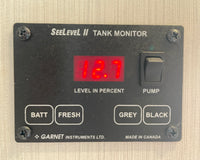
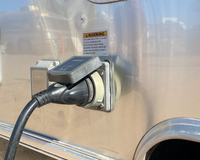
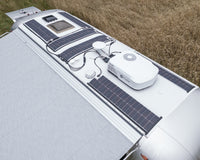
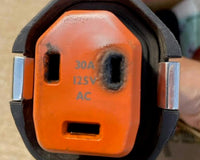



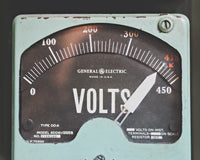
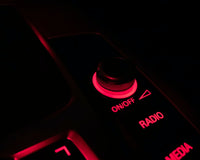

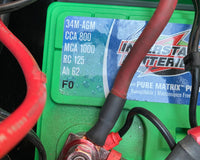
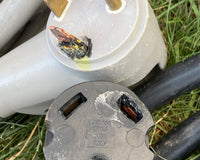
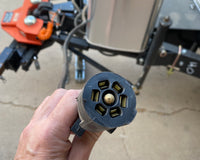
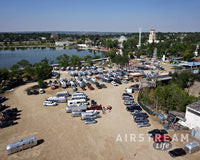
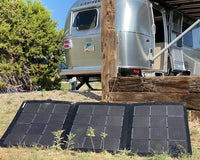
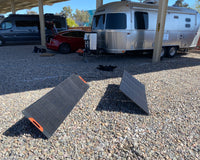
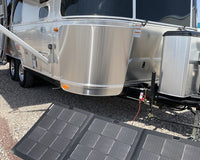
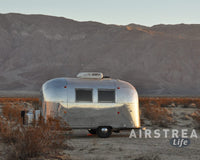
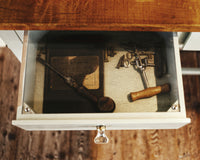
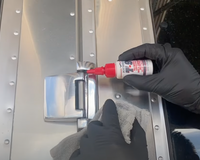
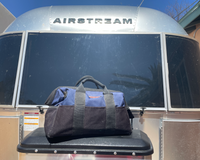
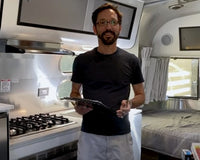
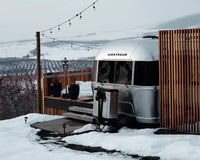
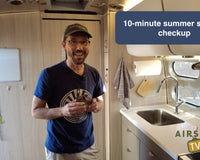
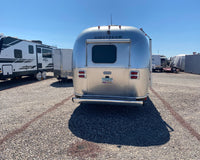
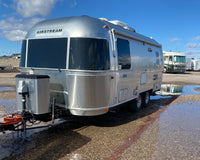
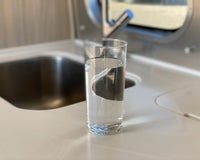
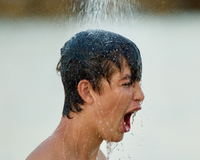
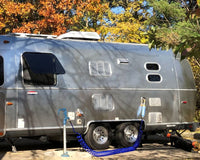
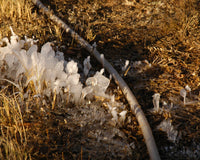
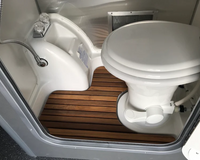
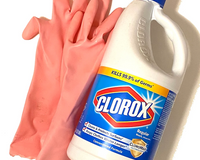
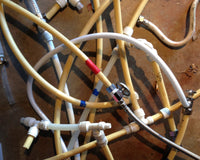
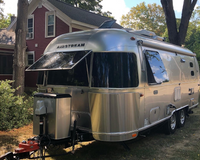
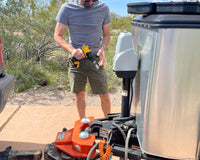
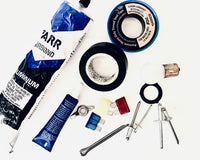
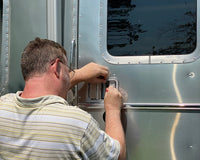
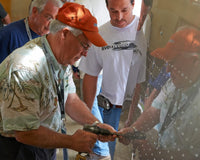
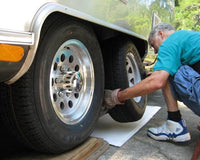
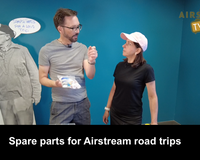
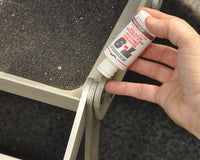
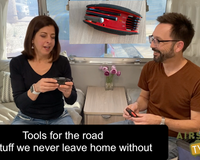
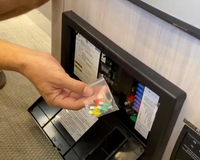
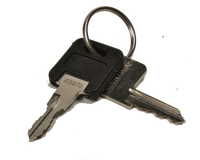
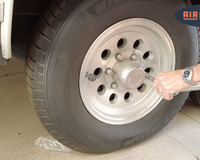
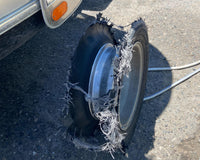
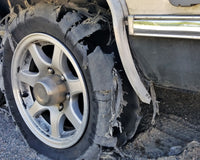
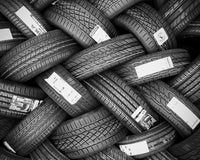
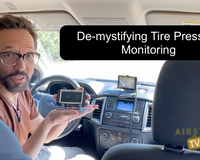
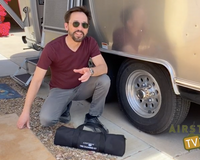
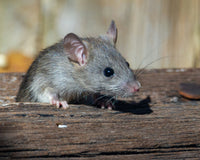
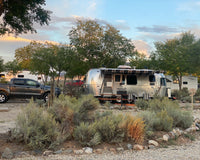
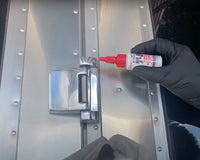
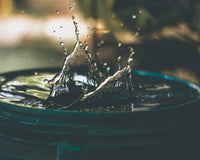
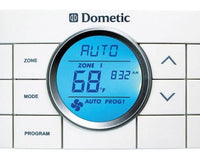
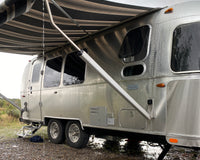
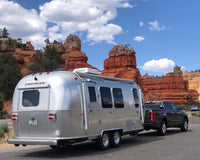
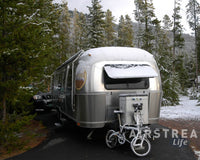
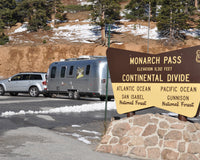
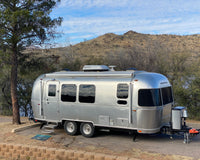
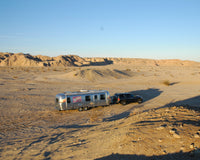


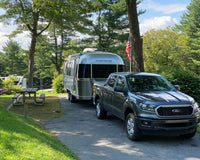
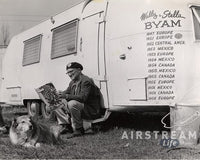
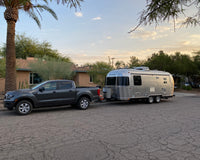
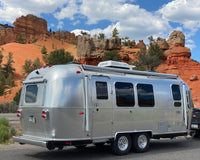
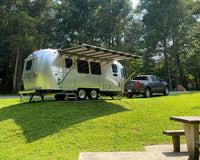
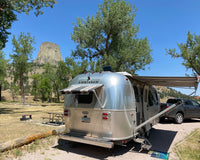
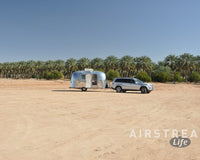
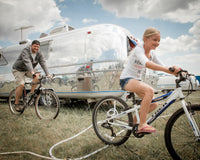

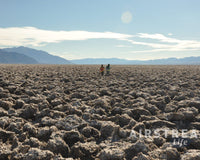
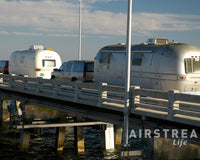
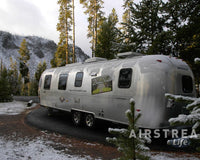
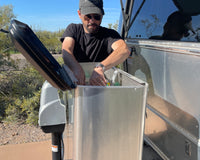
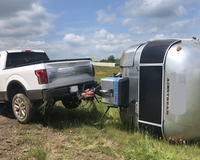
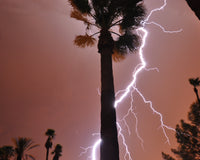
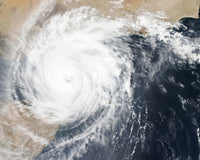
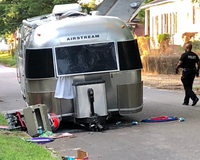
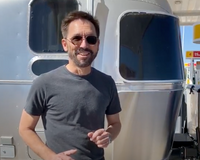
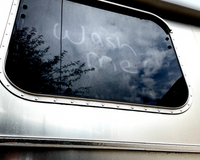
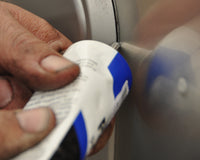
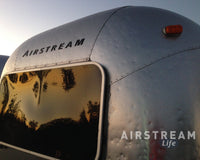
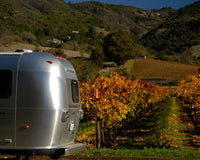
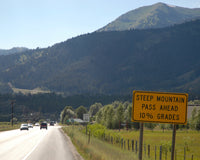
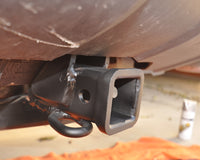
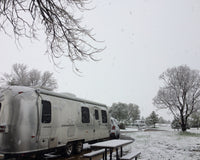
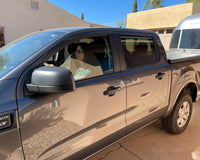
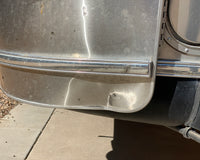
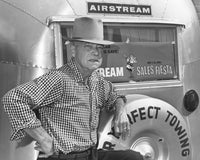
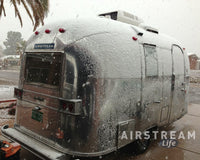
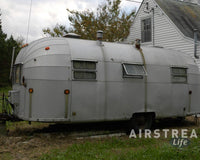
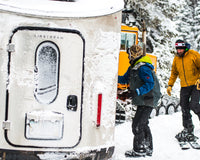
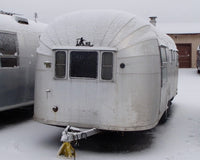
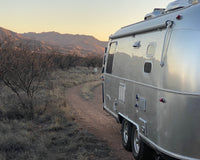
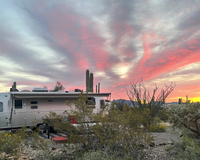
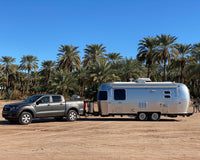
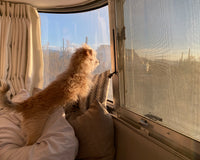
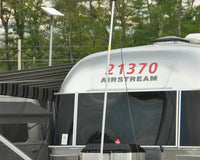
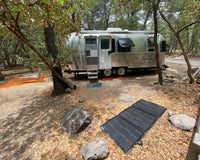
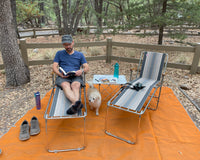
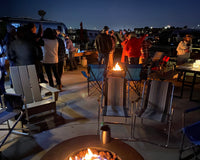

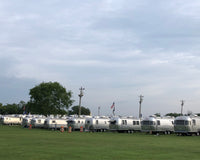
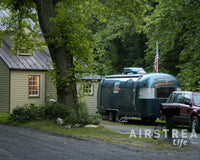
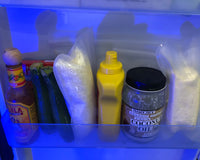
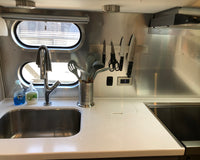
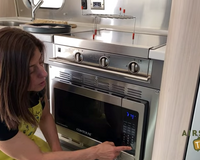
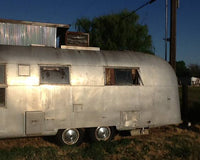
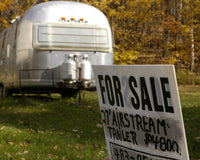
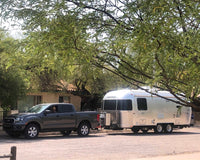
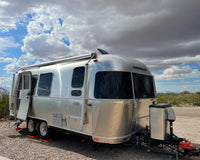
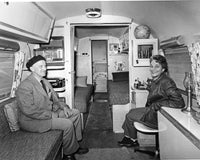
13 comments
Elly Cramer
This is my procedure (probably learned it from one of your seminars early on), but good to review. I do want to highlight the issue of getting it on your clothes. Being a bit of a klutz, I now wear my paint/project clothes to sanitize as I have several items with unintended bleach “art”. Thanks for all your great info on this blog!
Alan Gwin
Many, including myself, use a Berkey water purifier to clean any possible impurities from the fresh water tank. Another benefit is your not constantly buying water and creating plastic waste that takes up room along with all the other disadvantages. Like where do you store all of this store bought water until you can find a recycling place.
Jim Davis
Rich, do you have a companion blog for de-winterizing the trailer? We have a 2022 Flying Cloud 25FB, and being a newbie, I took the rig to our dealer (Airstream Adventures in Spokane) to perform the wet winterization and basically show me how to do that process in the future. Thanks for any guidance/direction you can point me to.
Jim Davis
Rich Luhr
Jim Davis: We haven’t yet published a blog on the subject of de-winterizing but it is discussed in my book, “The (Nearly) Complete Guide to Airstream Maintenance.”
De-winterizing is pretty easy. Remember that in the process you also should take a look at things that may need annual inspection or replacement. For more on that, check out our video on “9 things that expire in your Airstream” .
Peter J McGraw
Rich, I do pretty much the same when sanitizing my freshwater tank. However, after filling the tank and adding the bleach solution, I drive my Basecamp on a rough road for about 20 minutes. I want the water to slosh about to every possible area of the tank.
Rich Luhr
Peter, the 20 minute drive certainly won’t hurt, but if you fill the fresh water tank until it overflows at the water filler, the bleach will reach the entire tank.
The Chicorans
This worked great! The advice was most appreciated!
Thank you for your support!
Nancy M
Thanks Rich! I so appreciate your blogs! Im a first timer with a tiny driveway so I will be dewinterizing at a campsite. I didnt really feel comfortable dumping bleach water on the ground so glad to hear you run it through to the tanks too! And I also thought of sloshing it around but youre right, durr, it fills to the top anyway! Thanks again boss!
Kirk Schulz
I would love to see how to do this with the Airstream motor homes. Most of these require using water under pressure to fill the tanks. Any ideas on how to sanitize when you can’t pour in the water?
Rich Luhr
Kirk, I’d look for a winterization bypass valve, and use that to introduce the bleach/water solution from a jug, just you would do with RV Anti-freeze.
Mark
I’ve been flushing the freshwater tank and piping on our 2021 25FBT. And I have a puzzle. When I run on water from the tank I’m getting water at the faucets with lots of tiny bubbles looking almost like champagne??? But when I use “city” water the bubbles go away. I initially thought it might be a result of leftover antifreeze in the system that still hasn’t been completely flushed out yet. I’ve flushed the system with bleach/water but it doesn’t seem to be going away.
. . . any ideas?
Dan
Do you also recommend this for the fresh water hose? And how do you store the outside water filter, hoses, and fittings for the winter? Capped, or open to dry out?
Rich Luhr
Sanitizing is not a bad idea for the fresh water hose, but it’s not commonly done. It’s best to allow everything to dry out over the winter. Water filters should be replaced in the spring in any case.